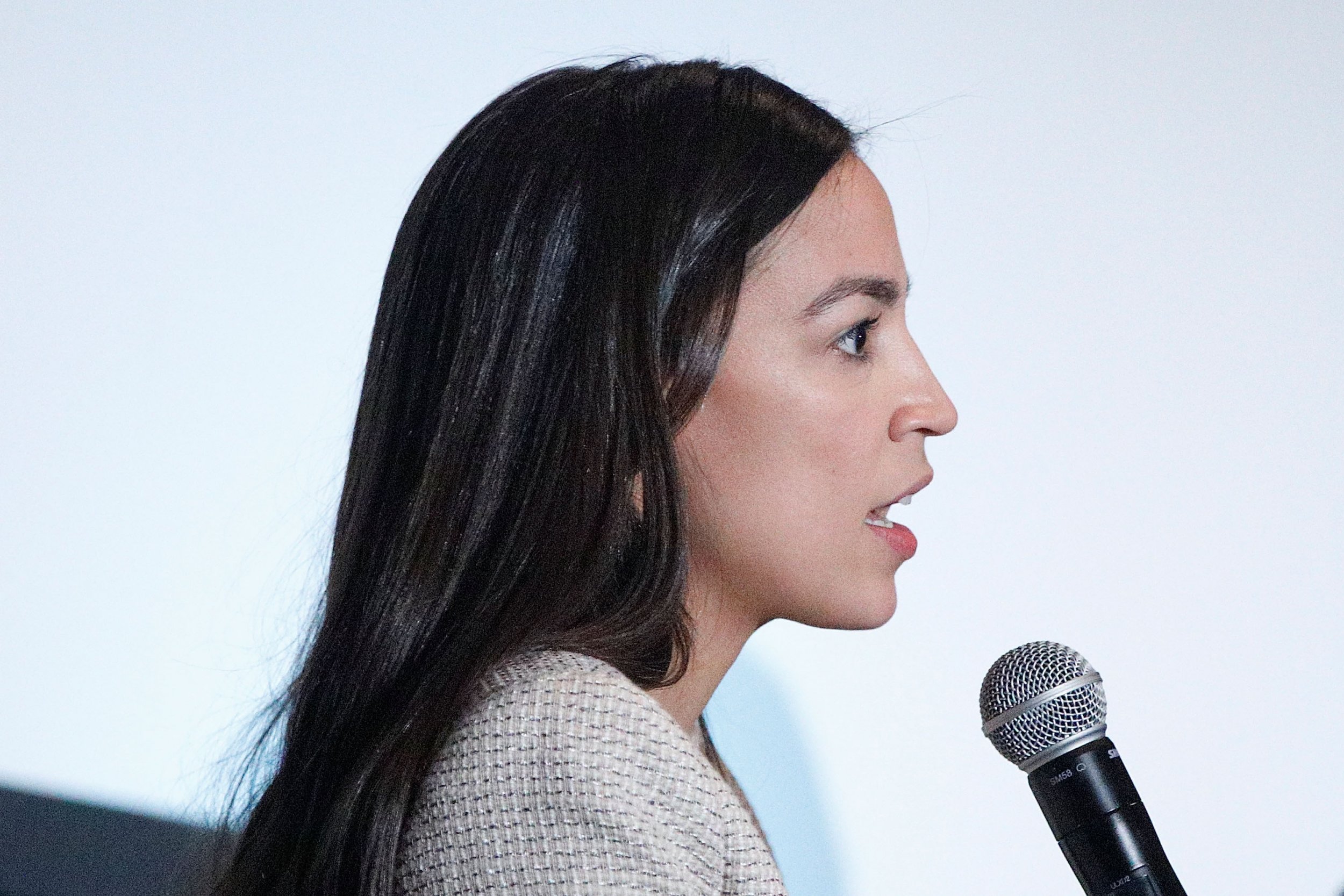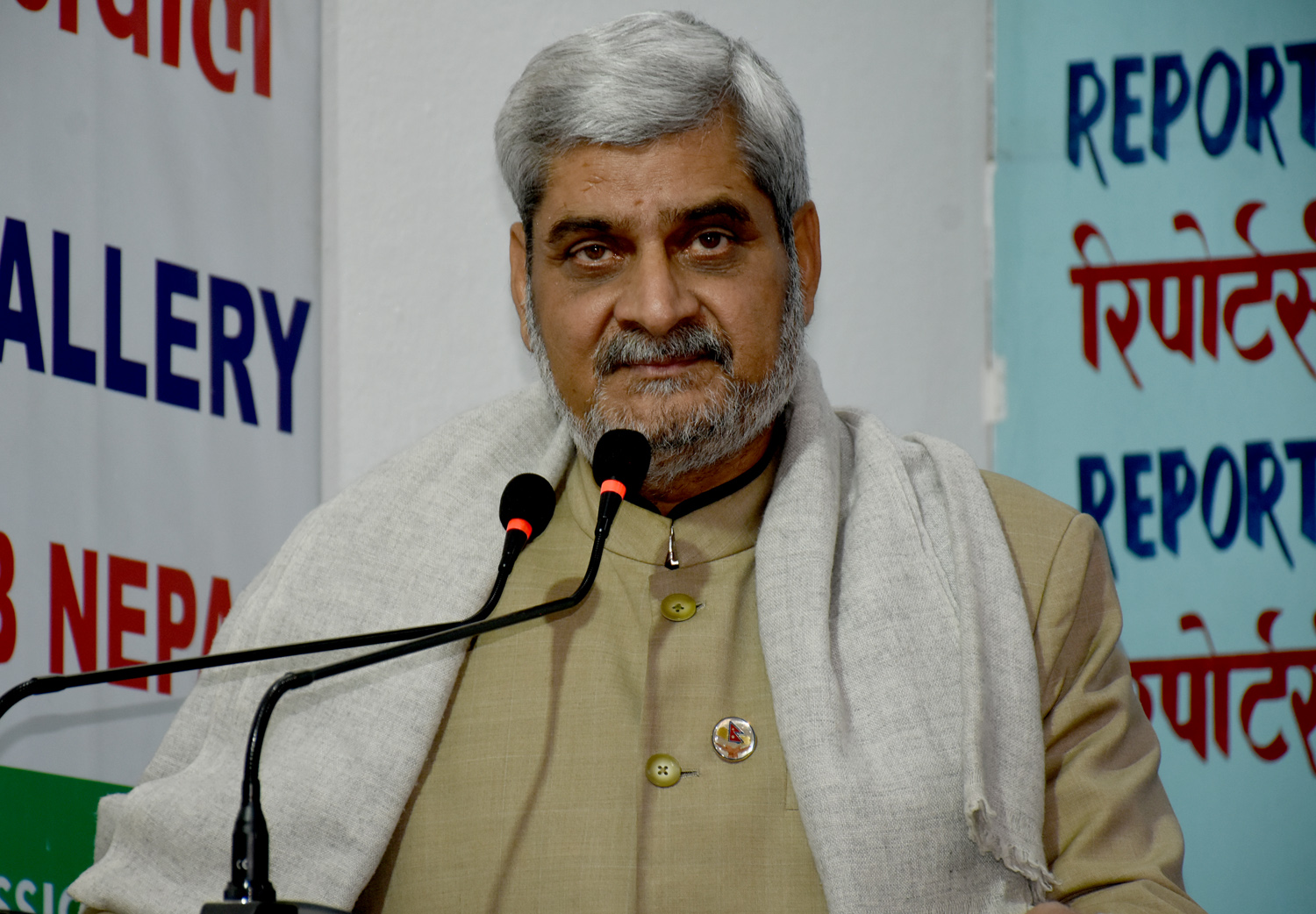यिनिहरुलाई मर्न डर छैन, पागल हुन या घमण्ड ? कोरोनाले गर्दा अमेरिका स्वतन्त्र राष्ट्र नभएको चिन्ता ब्यक्त गर्दै लक डाउन खोल्नका लागि मिनेसोट्टामा सरकारलाई दवाब दिँदै-
Posted by Milan K. Shahi on Sunday, April 19, 2020
Some notable activities by Nepal’s 2/3 Majority Communist Govt during the #COVID19 crisis: ❌Prep ✅Attack Dr....
Posted by Kashish Das Shrestha on Sunday, April 19, 2020
Am I the only one overwhelmed by the cultural riches online right now? (Free classes, tours, seminars, workshops,...
Posted by Manjushree Thapa on Friday, April 17, 2020
ल हेर्नुस प्रहरी मेरो साथी रे। औषधि किनेर फर्कने क्रममा बिरामी माथी कुट्पिट गरिराको छ।
Posted by Govinda Abiral on Thursday, April 16, 2020
I Beat #Covid19! Upon noticing the symptoms I was told to self isolate and report to the hospital If I had problems...
Posted by Dennis Jay Funny on Saturday, April 18, 2020
What is truth?
Posted by Jay P. Mandal on Sunday, April 19, 2020
Trump says China could face ‘consequences’ for coronavirus pandemic Trump focused much of his ire on China: its ‘weak’ economy, ‘questionable’ statistics on Covid-19 and ‘slow’ response to the virus ....... US president described his performance as incredible and repeated his call to open the US economy
Fight against the coronavirus is embroiled in a ‘fog of war’, with the poor becoming collateral damage The divergences in testing targets, reliability and reporting across countries mean the data is often misleading ..... Meanwhile, the poor suffer disproportionately during lockdowns and their living conditions make them vulnerable to the disease ...... “War is too important to be left to the generals,” remarked a prime minister concerned about keeping field commanders from seeking small victories at massive cost. ...... leaders today must listen to and question not only the virologists and epidemiologists, but also the economists, unions and employer groups, social workers and ordinary people who have their own risk/reward calculations. Only then can they make decisions on behalf of the societies they govern. ........ But what if it takes six years, not six months? Even a breakthrough drug cannot quickly be made available to enough of the 7.6 billion population to break the cycle of infection. Nor can half those people go into lockdown without famines and the breakdown of systems which enable societies – including distribution of medicines – to function. ........ Testing per million population (as of April 17) ranges from 59 in Myanmar, 220 in India and 2,694 in Malaysia to 15,509 in Hong Kong, 20,629 in Germany and 111,955 in Iceland. ........
Testing targets range from random to only the most severe and hospitalised cases. Test reliability is a huge known unknown, as is the incidence of asymptomatic cases.
......... In some European countries, deaths in care homes for the aged have only been recorded late or maybe not at all. ...... lockdowns in crowded cities, like Jakarta and Mumbai, may well cause huge social disruption without being effective, and causing social and economic dislocation which mostly hits the poorest. Minimal testing means it is difficult to track lockdown effectiveness. .......Poorer groups generally suffer more. That is even the case in rich, self-regarding Singapore.
Its much-vaunted public housing programme exclude the non-resident 29 per cent of the population and 37 per cent of the workforce, who are mostly either domestic helpers or workers living in barrack block dormitories with bunk beds and multi-user toilet facilities. Unsurprisingly, they have become the centre of Covid-19 outbreaks. ............. Foreign media, always anxious to preserve their access in Singapore, have long turned a blind eye to workers’ conditions. ..........Hong Kong lags far behind modern cities in investment in a clean environment and allowing new technologies to break down politically protected oligopolies. Can this bureaucracy turn its back on concrete, on the demands of vested interests and political pressures, and refashion its taxes and spending?Just maybe, the Covid-19 hit to its finances will shake the system to its core.
‘Huge numbers may be pushed into dire poverty or starvation…we need to secure them’ Amartya Sen, Raghuram Rajan, Abhijit Banerjee write: The unexpected loss of income and savings can have serious consequences, even if the meals are secured for now: farmers need money to buy seeds and fertilizer for the next planting season; shopkeepers need to decide how they will fill their shelves again ........... the lockdown will go on for quite a while, in a total or a more localized version, the biggest worry right now, by far, is that a huge number of people will be pushed into dire poverty or even starvation by the combination of the loss of their livelihoods and interruptions in the standard delivery mechanisms. That is a tragedy in itself and, moreover, opens up the risk that we see large-scale defiance of lockdown orders — starving people, after all, have little to lose. ........... We have the resources to do this; the stocks of food at the Food Corporation of India stood at 77 million tons in March 2020 — higher than ever at that time of the year, and more than three times the “buffer stock norms”. This is likely to grow over the next weeks as the Rabi crop comes in. The government, recognizing the disruptions to the agricultural markets from the lockdown, is more than usually active in buying the stocks that the farmers need to get rid of. Giving away some of the existing stock, at a time of national emergency, makes perfect sense; any sensible public accounting system should not portray it as inordinately costly. .............
the government already has shown a willingness to use the stocks — it has offered a supplementary PDS provision of 5 kg/person/month for the coming three months.
........ a substantial fraction of the poor are excluded from the PDS rolls, for one reason or another (such as identification barriers to get a ration card that turn out to be hard to overcome), and this supplementary provision only applies to those who are already on it. For example, even in the small state of Jharkhand, there are, we are told, 7 lakh pending applications for ration cards. There is also evidence that there are a lot of bona fide applications (for example of old-age pensioners) held up in the verification process, partly because the responsible local authorities try to avoid letting anybody in by mistake to avoid any appearance of malfeasance. ......... Such punctiliousness has its merits, but not in the middle of a crisis. The correct response is to issue temporary ration cards — perhaps for six months — with minimal checks to everyone who wants one and is willing to stand in line to collect their card and their monthly allocations. The cost of missing many of those who are in dire need vastly exceeds the social cost of letting in some who could perhaps do without it. ..........the government should use every means at its disposal to make sure that no one is starving.
........ setting up public canteens for migrants and others who are away from home, sending the equivalent of the school meal to the homes of the children who are now stuck at home (as some states are already doing), and making use of reputed local NGOs that often have a reach among the most marginalized that exceeds that of the government. ........... starvation is just one of the worries; the unexpected loss of income and savings can have serious consequences, even if the meals are secured for now: farmers need money to buy seeds and fertilizer for the next planting season; shopkeepers need to decide how they will fill their shelves again; many others have to worry how they would repay the loan that is already due. There is no reason why, as a society, we should ignore these concerns. ......... the cash transfers it has promised to certain groups; but the amounts are both small and narrowly targeted. Why only farmers and not landless labourers, especially since MGNREGA is hobbled by the lockdown? And help needs to be extended to the urban poor. .......... using the MGNREGA rolls from 2019, plus those covered by Jan Arogya and Ujjwala to identify the poor households and to send them 5000 rupees each to their Jan Dhan accounts ......... the many gaps in the JAM infrastructure in terms of reaching the very poor. ....... there has to be funding available that state and local governments can use to find effective ways to reach those who suffer from extreme deprivation........... If there was ever a challenge that requires brave and imaginative action, this has to be it.Amartya Sen writes: Overcoming a pandemic may look like fighting a war, but the real need is far from that Amartya Sen writes: Tackling a social calamity is not like fighting a war which works best when a leader can use top-down power to order everyone to do what the leader wants — with no need for consultation. In contrast, what is needed for dealing with a social calamity is participatory governance and alert public discussion. ........ The ways and means of getting displaced migrant labourers back to their homes, and making arrangements for their resettlement are also challenging issues that call for careful listening rather than inflexible decisions without proper consultation. ........... Famines, which were a persistent occurrence throughout the history of authoritarian British rule, stopped abruptly with the establishment of a democratic India. ........ democracy is never understandable only as a system of free elections, which are intermittent, often with a big gap between one and the next, and which can be swayed by the excitement that the immediate political context generates. ........ Given that, if all people were to vote according to their own personal interests, an election would not have been a strong saviour of famine victims, since only a small minority of people actually starve in any famine. .........
a free press and open public discussion makes the distress and dangers faced by the vulnerable poor substantially known and understood by the public at large, destabilising the standing of a government that allows such a calamity to happen.
........ Even though only a minority may actually face the deprivation of a famine, a listening majority, informed by public discussion and a free press, can make a government responsive. ......... democracy as “governance by discussion” helps to identify the saviour of the threatened famine victim, in particular a free press and unrestrained discussion. ....... for overcoming a social calamity, listening is an ever-present necessity. ........ the calamity caused by a pandemic, in which some — the more affluent — may be concerned only about not getting the disease, while others have to worry also about earning an income (which may be threatened by the disease or by an anti-disease policy, such as a lockdown), and — for those away from home as migrant workers — about finding the means of getting back home. ........If a sudden lockdown prevents millions of labourers from earning an income, starvation in some scale cannot be far off.
............ devoting more public funds for helping the poor (which gets a comparatively small allocation in the central budget as things stand), including feeding arrangements in large national scale, and drawing on the 60 million tons of rice and wheat that remain unused in the godowns of the Food Corporation of India.PM Modi has deftly drafted people into the fight against pandemic Modi has not called the army onto the streets. He has not denied people any fundamental human rights. The lockdown instructions were largely voluntary and for the public good. ......... Viktor Orban felt that the Parliament impeded his fight against COVID-19. The prime minister of Hungary used the majority he enjoys in the parliament to secure emergency powers for himself. He can now run Hungary through decrees without any judicial oversight. Any criticism of his measures will attract imprisonment up to five years. ........... The Prime Minister of Israel, Benjamin Netanyahu, has ordered the courts to be shut down (some criticise this as a measure to evade his own prosecution), authorised his internal security agencies to carry out extensive surveillance on citizens, and is punishing violators of the lockdown with six months’ imprisonment. ...... The United Kingdom, with well-established democratic institutions and practices, had to push through a pandemic-related bill that gave sweeping powers to different ministries for detaining and arresting people indefinitely. .........
The UK has formed a “COVID Response Group” with about 20,000 soldiers.
......... In the US, initial efforts by the Donald Trump administration called for sweeping powers to detain people indefinitely without trial and end legal protection to asylum seekers. However, the US Congress intervened and forced the Justice Department to dilute its wish-list. ........... He came out as a committed democrat upholding basic human rights in a “world war-like situation”, as he has described it. ........ Shashan, Prashasan aur Janta Janardhan — political leadership, bureaucracy and the divine people — was how he described his combat coalition in a recent address to the nation. ......... Starting with his first major campaign for cleanliness — Swachh Bharat Abhiyan — right up to the present fight against the pandemic, Modi has displayed the unique skill of increasingly making people active participants. ........ Democracies are run based on the rule of law where the rules framed by the constitution are supreme. Authoritarians try to resort to rule by law, a complete deviation from the democratic spirit. ..........the large-scale flight of migrant workers.
Lockdown trade-offs in a young country call for wide public deliberation One needs more systematic thinking about the hard choices India now faces — the trade-offs between the lockdown paralysing the economy and decimating the poor on the one hand, and on the other, lifting the lockdown thereby allowing the infection rate to soar, and taking a heavy toll on the old. ....... the most successful have been South Korea, Taiwan and Singapore. ..... all these three countries are relatively small, where mass-testing and quarantine are easier to implement. ........ the virus-fighting performance, so far, in the three largest countries of the world: China (an openly authoritarian country), India (until recently a democracy, now in an alarming state of decline), and the US (a highly flawed but functioning democracy). ........ China had, after its mismanagement of the SARS epidemic, installed
a well-designed early-warning system by which Beijing was to get immediate warnings of a contagion developing anywhere in the country.
Yet, it fumbled again, this time largely because in an authoritarian system, local officials do not want to share bad news with the authorities above them. ............In the US, the President and the ruling party were in denial until mid-March (consistent with their anti-science and anti-expert attitude), fatally wasting several weeks of preparation, testing and tracing
(A large state where many of the old people live, Florida did not get going until the beginning of April). Even in the best of times, the US private medical insurance system is messy and mired in a bureaucratic system that is oriented towards excluding people. It is largely unaffordable for the vast masses of the poor who do not have a stable job. Among rich countries, the system is among the least prepared to face a pandemic of current proportions. Testing facilities are highly inadequate, nurses are appealing to the general public for donations of hand-sewn masks, and hospitals are facing what is called the triage protocol, when one has to make cruel choices in rationing beds and medical equipment among patients of different survival probability............... The current regime in India has, by and large, been trying to copy this American system. Government spending on health, as a percentage of GDP, is one of the lowest for a major country. Faced with the virus, India, like the US, has been woefully unprepared. India also wasted crucial weeks in February and the first two weeks of March, but not so much because of anti-science attitudes, but more because of another virus that has been afflicting our body politic —the virus of hate and intolerance.
............ In the third week of March came the sudden total lockdown, with hardly any notice or consultation with state governments, and without any simultaneous announcement about alternative food and shelter arrangements for the suddenly unemployed — chaos, police dandabaji, displacement and destitution followed. The financial package announced a few days after the announcement was a pittance in view of the needs, and about half of the spending announced was old outlays dressed as new.Tourism, hospitality sector will need to remake itself after COVID-19, as it did after 9/11 In the aftermath of COVID-19, we must accept that epidemics and virus breakouts may return to haunt us again in the future. Preparedness should be our key takeaway from this experience. ...... I have been part of the hospitality industry for over four decades and seen many cycles of downturn. But never before has there been so much panic, despair and hopelessness as caused by COVID-19. ....... The estimated loss to the sector in India is currently pegged at a daunting Rs 5 lakh crore and job losses to the tune of four crore to five crore. These figures could change depending on how long it takes for nations to control the virus. ..........
It is a big blow when business is down to zero.
........ Tech interventions will create minimum physical touch points in hotels.COVID-19 pandemic makes world re-examine interconnection between man and nature Despite rapid scientific and medical advancements, the pandemic has shown how vulnerable and helpless homo sapiens are, even as scientists across the globe are racing against time to save lives by finding an appropriate cure for the severely afflicted and develop a preventive vaccine. ...... an occasion to remind humanity to not only maintain personal hygiene but also not to tamper with nature ........
the pandemic has shown how vulnerable and helpless homo sapiens are
........ The deadly virus does not distinguish between a prince and a pauper, nor does it recognise distinctions between regions or religions. It continues to shake the entire world with country after country announcing lockdowns and closing borders to prevent its transmission. ......... It is not only ironical but also a bit surreal that while the world wide web opened up the world and connected people like never before, the worldwide virus has forced nations to close their borders and opt for social distancing. ......... time to raise questions over our development model and the fragility of our ecosystem and the unsustainability of our production-consumption patterns. ......... man’s greed which is destroying the habitats of other species is triggering such catastrophic consequences. .......... The COVID-19 pandemic is bringing into sharp focus the distortions in the ecological equilibrium. ......... More than 2,000 years ago, the ancient Vedic sages had espoused a worldview that gave equal importance to all living creatures. .......... It is time for all Indians and every global citizen to become proactive warriors in the cause of protecting nature so that the planet, people and all other living creatures remain healthy and enjoy a harmonious existence. The air we breathe and the water we drink should be clean. We should conserve soil and plant wealth and other natural resources. ........... The drastic improvement in air quality in the wake of the lockdowns and the recent reports of wild animals wandering into urban spaces illustrates the extent to which human beings have caused disruption. ........ India has achieved significant progress on various health indices since Independence and has eliminated important infectious diseases like yaws, smallpox, and polio. The average life expectancy has increased to 69 years and India’s disease burden due to communicable, maternal, neonatal, and nutritional diseases has dropped from 61 per cent to 33 per cent between 1990 and 2016. ........61 per cent of all deaths in India to NCDs like heart disorders, cancer and diabetes.
......... adopting a healthy lifestyle by shunning sedentary living and avoiding junk food....... promoting yoga and meditation as also healthy dietary habits ..... take special care of senior citizens and the elderly ...... they are the most vulnerable to contract the disease. ......... This pandemic has made the world re-examine the interconnection between man and nature. We need to recognise that we share this planet with plants, birds and animals and other living organisms.India’s top infectious disease killed over 4,40,000 people in 2018 To put the figures of coronavirus in perspective, tuberculosis alone kills an average of 4 lakh Indians annually, and the daily average of over 1,200 is way beyond the COVID-19 fatalities in the country........ 4.4 lakh people died in 2018 of TB, which is 29 per cent of the total 1.5 million deaths due to TB in the world. India features among the top eight countries with the highest number of TB cases. ....... Adding to this are the “million missing cases every year that are not notified, and most remain either undiagnosed or unaccountably and inadequately diagnosed” ......... COVID-19 infections at present have a mortality rate of 3.3 per cent, far lower than the average 20.23 per cent rate of tuberculosis. This means that out of the total number of infected cases at a given time, 20 per cent of the patients succumb to the disease. ........ Much like the COVID-19 pandemic, the symptoms of H1N1 include fever, sore throat, runny nose, and cough. ........
While the coronavirus crisis has put in focus the capacity of the country’s healthcare system, heart, respiratory, diarrhoeal and chronic renal diseases kill lakhs of people each year.
Interestingly, 86 per cent of those who died due to coronavirus had co-morbidities (additional medical conditions), such as diabetes, heart disease, kidney ailments etc ...................... the prevalence of cardiovascular diseases is estimated to be around 54.5 million in the country and on an average kills 4,000 people daily ........ there were an estimated 219 million malaria cases and 4,35,000 related deaths in 2017. India accounts for 4 per cent of the global malaria burden ......... AES and Japanese encephalitis too have a high mortality rate of 9.07 per cent, triple of the coronavirus rate‘India facing greatest emergency since Independence’: Raghuram Rajan on coronavirus Stating that spending on the needy is "the right thing to do as a humane nation," Rajan wrote, "Unlike the United States or Europe, which can spend 10% more of GDP without fear of a rating downgrade, we already entered this crisis with a huge fiscal deficit, and will have to spend yet more." ......... if the government insists on driving everything from the Prime Minister’s Office, with the same overworked people, it will do “too little, too late”. ......... “The state and Center have to come together to figure out quickly some combination of public and NGO provision (of food, healthcare, and sometimes shelter), private participation (voluntary moratoria on debt payments and a community-enforced ban on evictions during the next few months), and direct benefit transfers that will allow needy households to see through the next few months. We have already seen one consequence of not doing so – the movement of migrant labour. Another will be people defying the lockdown to get back to work if they cannot survive otherwise.” ..........
India reforms only in crisis.
...... “Hopefully, this otherwise unmitigated tragedy will help us see how weakened we have become as a society, and will focus our politics on the critical economic and healthcare reforms we sorely need”A prescription for action: Nine steps after the next 21 days Even if lockdown flattens the curve, COVID-19 will spread. Looking at migrants on the road, let’s expect a mess — and plan for it, write Nobel Laureate economists Abhijit Banerjee, Esther Duflo .......... How about migrant construction workers getting to stay on at the now closed site, their temporary home during the construction? Or do they need to return to their village, though the trains are no longer running.
We hear of large caravans of people walking from Delhi to Bihar.
Should we assume that they are maintaining social distance as they huddle into small unauthorised spaces to spend the night? Should we blame them if instead of walking from Delhi to Darbhanga, they choose to ride on the back of a truck, 25 men and women in 25 square feet? .............. Or the residents of Dharavi in sweltering Mumbai, where temperatures are already touching the mid-30s and will go up further?Are they supposed to sweat it out together, six people in a 10 by 10 by 10 tin can, both kitchen and bedroom?
Without the occasional respite, the park where the sea breeze comes in after dusk, the shaded corner where you go to take that precious phone call. ............. while there is broad awareness of the disease, there is wide variation in people’s understanding of what not to do. ........ even if the lockdown works and the “curve gets flattened”, and the overall spread of the disease remains contained, the disease will continue to widen its ambit, as unknowing carriers reach new populations. ........ the son who comes home from Delhi could infect the entire extended family before it gets discovered. ...... Proper social distancing and complete lockdowns are just very hard to achieve, for example, in many urban slums. ...... the disease will start to spread at an accelerating rate as soon as the curfew is lifted. ...... the problem will be there with us in 21 days. ...... need to be prepared for the disease to explode in pockets all over the country, including some of the more remote rural areas, over the next many months. ...... some of these hotspots will be exactly where our system of healthcare is the weakest ........ “Doctors” with no medical qualification are the dominant source of day-to-day healthcare in much of India ........be much, much bolder with the social transfers schemes. Without that, the demand crisis will snowball into an economic avalanche, and people will have no choice but to defy orders. What the government is offering is now is small potatoes ....... better to go for universal coverage ..... be prepared to continue this “war effort” until the vaccine comes on line. Then vaccinate as many people as possible. And start to upgrade the healthcare system — let us be better prepared for the next time.Lockdown announcement has not been matched by national strategy — on containing fallout for poor PB Mehta writes:
India has never understood that health expenditure is not expenditure; it is investment.
The success of the lockdown strategy is premised on an unprecedentedly vigorous building up of health infrastructure to fight the pandemic. ........ The risks of any catastrophic spread will be even more incalculable for the poor. ....... The much neglected panchayat and local officials are key nodes in keeping track of possible cases and the creation of quarantining infrastructure. ..... this crisis is bringing home the importance of both federalism and decentralisation as central to a resilient governance architecture. ......... The announcement of the lockdown has not been matched by a commensurate national strategy. This is manifest, most importantly, in the early signals on two important aspects: Containing the economic fallout for the poor and building up the health infrastructure. It is, admittedly, early days; but the signs are not good. ......... what you got was incrementalism of the worst kind, masquerading as big commitment ......... The cash transfers, in particular, through different schemes, are shockingly low. This crisis is one of the rare instances where economists and even bankers, from across the political spectrum, have rallied around the intellectual argument for unprecedented levels of social security support. So the government’s “support by stealth” strategy is even more mystifying. ............The magnitude of the crisis unleashed for migrant labour could have been avoided with a little forethought. Early announcement of cash transfers, shelter and food availability, would have obviated the need for migration. ...... we were given more time to prepare for the banging of utensils, than migrant labour was given time to reach home
........ The treatment of the poor in this crisis seems to bear all the hallmarks of what the state did to them during demonetisation: They are asked to sacrifice disproportionately for the common good, they are treated with impunity, and the state acknowledges their needs only very grudgingly. .......... the initial hesitations, missteps and immobilising questions of justice are revealing about our priorities and do not inspire confidence. .......... Opacity is often a consequence of scarcity. And nowhere is this more manifest than in our discussion of testing. Everyone understands that India has scarce testing capacity, though it seems it is also under-utilising what it has. ...... there is a view that more testing might spread more panic. Or it might put more pressure on the health care system than it can handle. ....... The prime minister is constantly asking the citizens to mobilise; and most of them respond. But it about time the state mobilises: On an economic stimulus that is truly meaningful and health infrastructure push that inspires confidence.First stimulus by Centre targets poor, later announcements should keep the financial system running Some observers are also concerned about what high deficits would do to India’s credit ratings. It remains to be seen how agencies respond to globally large fiscal deficits monetised by central banks; India may not be an outlier here. ........
the lockdown, which impairs 37 per cent of India’s total output, could shave 4 per cent from the annual GDP over 21 days.
....... the loss of income during this period could impair economic momentum for several quarters after that. There are challenges in the financial system too, where foreign lenders had contributed to more than a third of incremental credit in the last 12 months, but now that market is effectively shut. Slowing global growth will have its own impact on Indian exporters, as will the disruption in global supply chain caused by factories shut by quarantine rules. ......... the significant monetary easing by developed market central banks is likely to make funding easier once the current market turbulence abates. The lower price of oil also helps the Indian economy. ........ much of the income lost in the current slowdown is likely to be permanent. While there may be some rebound, the drop in consumption due to lost incomes can kick-start a vicious cycle of slowing economic growth. ......... Given that income generation has stalled, economic activity can only be sustained by digging into past savings or borrowing from the future. These can happen at the levels of individuals, firms or governments. ......... Poor individuals do not have any buffers to dig into, and also cannot borrow easily. This is particularly true of migrant workers in urban areas: Many do not have the social networks that can help them survive the lockdown using informal credit. In rural areas they have that cushion – that India has a weak state but a strong society plays a role there; migrant workers lack this support. ......... Small firms are only slightly better off than unsalaried individuals, with low savings cushions and weak cash flows: The drop in incomes may affect the solvency of some, but the lack of liquidity is likely to hurt most of them. When inflows stop, fixed costs become a challenge: Other than salaries, these mostly mean rents, interest costs and utility bills. ......... It was not surprising therefore to see the RBI announce forbearance on deferment of loan repayments for three months. But this then pushes the pain to the financial system. ........ Without a backstop from the government, the central bank may not be able to provide the necessary liquidity. ......... If printing money to consume goes beyond a threshold, it would disturb India’s external balances and thence cause the currency to weaken. Our preliminary estimates suggest there is adequate room currently for a significantly stronger stimulus than provided thus far. .......... An equally important issue is inter-generational income transfer. A fourth of central government spending today is interest costs, a stark reminder that the money spent as stimulus today is money we borrow from our kids.COVID pandemic has exposed fragility of global society, governance — and pointed to the way forward Shashi Tharoor, Samir Saran write: Many will find in this pandemic an opportunity to close themselves off to the international community. India must defy such impulses. If anything, Indian leadership in these times — and
a new resolve for global governance — may be just the vaccine that the international community needs to navigate a new decade
.......... the waning legitimacy of international institutions. The WHO’s response to the outbreak, with its indulgence of the official Chinese line for far too long, is an important case in point. Many of our global institutions and their agencies suffer from politicisation, manipulation and a lack of representation, independent leadership and purpose. The second crisis relates to national sovereignty, and its resurgence amidst the wave of nationalism sweeping the world. ..........the EU has struggled to support its member states in their worst public health emergency in modern history.
......... Had global governance been working effectively, the world would have identified the coronavirus as soon as it emerged; sounded a global alarm earlier about its dangers; and publicised the best practices that should have been adopted by all countries to prevent or limit its spread. That this did not happen is a damning indictment of the state of our new world disorder. ........... In 2001, we learnt that anger and malice in Afghanistan could take down skyscrapers in New York. The year 2008 saw dormant financial malpractices in the US rapidly metastasise into a global financial crisis. In 2016, Russia tried to register itself in the voter rolls for the US elections. It is clear to us that the sheer complexity and immeasurability of our interdependence requiresmore global governance, not less
. ......... India’s vast, mostly undocumented and migrant informal workforce, is already suffering the heaviest damage from the economic fallout. ...... an opportunity to resolve the many socio-economic inequities that plague our country. ...... The world is slipping into spheres of influence of exclusive arrangements, limiting our ability to respond effectively to global challenges. ........The coronavirus epidemic is a devastating reminder of the consequences of disorder.
State’s measures to fight coronavirus are stripping the poor of dignity and hope Harsh Mander writes: The Indian government found it fit to charter planes with medical staff to fly in migrants from other countries. But it felt no responsibility at all to the millions of migrants stranded without work and food in every corner of the country. .......
I won’t die of corona. Before that, I will surely die of hunger”.
....... “Demonetisation was nothing compared to what we are going through”, said another. “We don’t know if and how we will survive this time”. ........ Finance Minister Nirmala Sitharaman .. “No one will go hungry”, she promised. ....... Did she really believe that five extra kg of wheat or rice and 1 kg of pulses for a family, Rs 1,000 for the aged, disabled and widows, Rs 1,500 over three months for women with Jan Dhan accounts, free gas cylinder connections, and a Rs 2,000 cash transfer to farmers under an on-going scheme, would ensure this? .......... How, for instance, will they draw money from their accounts during the lockdown? And the most food-vulnerable people, such as street children, homeless and disabled persons, and remote and nomadic tribes don’t have either accounts or cards. ........... the devastating economic impact of a national lockdown on an economy of mostly informal workers which was already grinding down. .......the damage of the first two days of lockdown was greater than the full impact of demonetisation, and that the economy, which was on a sharp downslide, stood in danger of slipping into an abyss.
........ Who will harvest, and who will buy the harvest? Small and medium enterprises have shut down, and construction, even informal workplaces like eateries and tailoring units, have closed. ........ If a rumour arose that some kind person is distributing food in a corner, a near-stampede would break out. The disabled, the aged, women and children are left behind. The food is elementary, insufficient, and most of all, destructive of their dignity. They want work, not pity. If work is taken away from them by state action, their survival should not be a question of private charity but of the highest public duty. .......... Truck drivers are trapped on highways across the country, in a purgatory from which they have no escape or succour. ....... the poor seem doomed to die not just of hunger but also of the virus when it catches up with them. ............ I am unable to support this shockingly anti-poor lockdown. India could learn well from countries like South Korea and Taiwan which combatted the virus without national lockdowns. We must consider a roll-back.Let’s use follower’s advantage: We could learn to fight Covid-19 from South Korea In confronting coronavirus, India’s first moves have been right, but much will depend on follow-up. We could learn from South Korea.
Coronavirus News (49) https://t.co/dZ4nroJ2Je #India #IndiaFightsCorona #coronavirus #CoronaVirusUpdate #Corona #COVID19 #COVIDー19 #pandemic #lockdown
— Paramendra Kumar Bhagat (@paramendra) April 20, 2020
Nurses blocking anti lockdown protests in Denver is the kind of bad assery that we all should aspire to pic.twitter.com/zkMZaANSk4
— keyvan (کیوان) 🌹 (@shafieikeyvan) April 19, 2020
Thinking the worst was over, people dropped their guard https://t.co/szV9D7ao0K
— The Economist (@TheEconomist) April 20, 2020
NYS’s anti-body test beginning tomorrow will sample 3K people for a population of 19.5M people—
— Melissa DeRosa (@melissadderosa) April 19, 2020
for context, Germany just did 3K person sample with a population of 83M https://t.co/PJCvWwxA5k
NEW COMPANY: Pet adoptions are on the rise across the country, with some animal shelters emptying for the first time in decades. @tomllamasABC with the families and their new companions. #AmericaStrong pic.twitter.com/DwOUms7ZaX
— World News Tonight (@ABCWorldNews) April 20, 2020
For the folks saying “landlords have the right to do background checks/get your financial info”, that only applies during the application process. Landlords do not have the right to use your personal info to go through your records whenever they want. In fact, it’s illegal. https://t.co/BI0SRrjqdz
— I’m a man. 🏁🏁🏁🏁🏁 (@QuestMalloy) April 19, 2020
Men: why are we twice as likely to die from coronavirus
— feminist next door (@emrazz) April 19, 2020
Also men: doctors are for pussies I will shoot a coronavirus with my gun
A friend, a frontline physician helping #COVID19 patients, texted me: "All I've done today is pronounce people dead and call their families. I am convinced, today, that our president and his cabinet are sociopaths. I'd like them to do my job or our nurses jobs for one minute."
— Wajahat "Social Distance Yourself" Ali (@WajahatAli) April 19, 2020
I've been sneezing the whole time this Trump press briefing has been on because I'm allergic to bullshit.
— Palmer Report (@PalmerReport) April 19, 2020
And this is perfect for the Angry White Trumper: People in blue states, guided by the elites and know-it-alls they hate, stealing a march on them by being better and more civic minded citizens than they are. So now it's "fighting tyranny," because they've got nothing else. /3x
— Tom Nichols (@RadioFreeTom) April 19, 2020
Trumpers losing their shit over the pandemic are evidence, yet again, that they are just angry *in general*, and their anger can be focused in almost any direction by entrepreneurs at Fox or in the White House. They don't even know what they're mad about; they're just mad. /1
— Tom Nichols (@RadioFreeTom) April 19, 2020
My kid, trying to explain how bad her stomach ache feels: “I’m museum sick. Like when you’re so bored from just looking at things.”
— Erin L. Thompson (@artcrimeprof) April 19, 2020
She’s 4. I’m an art historian. Low blow, kid, low blow.
President @realDonaldTrump is working to protect high-risk communities from the coronavirus.
— Kayleigh McEnany (@PressSec) April 19, 2020
His administration is funding 13,000 community health center sites & mobile medical stations, which offer treatment to 28 MILLION Americans in medically under-served areas.
Trump has lost Piers Morgan. https://t.co/3IXiVRUznB
— Dustin Hines (@dustinhines) April 19, 2020
As Dr. Hurst said, the fight against COVID-19 is far from over. We will continue to make decisions based on facts and science, and will do whatever it takes to save lives. #StayHome https://t.co/HSHGA2NY3N
— Governor Gretchen Whitmer (@GovWhitmer) April 19, 2020



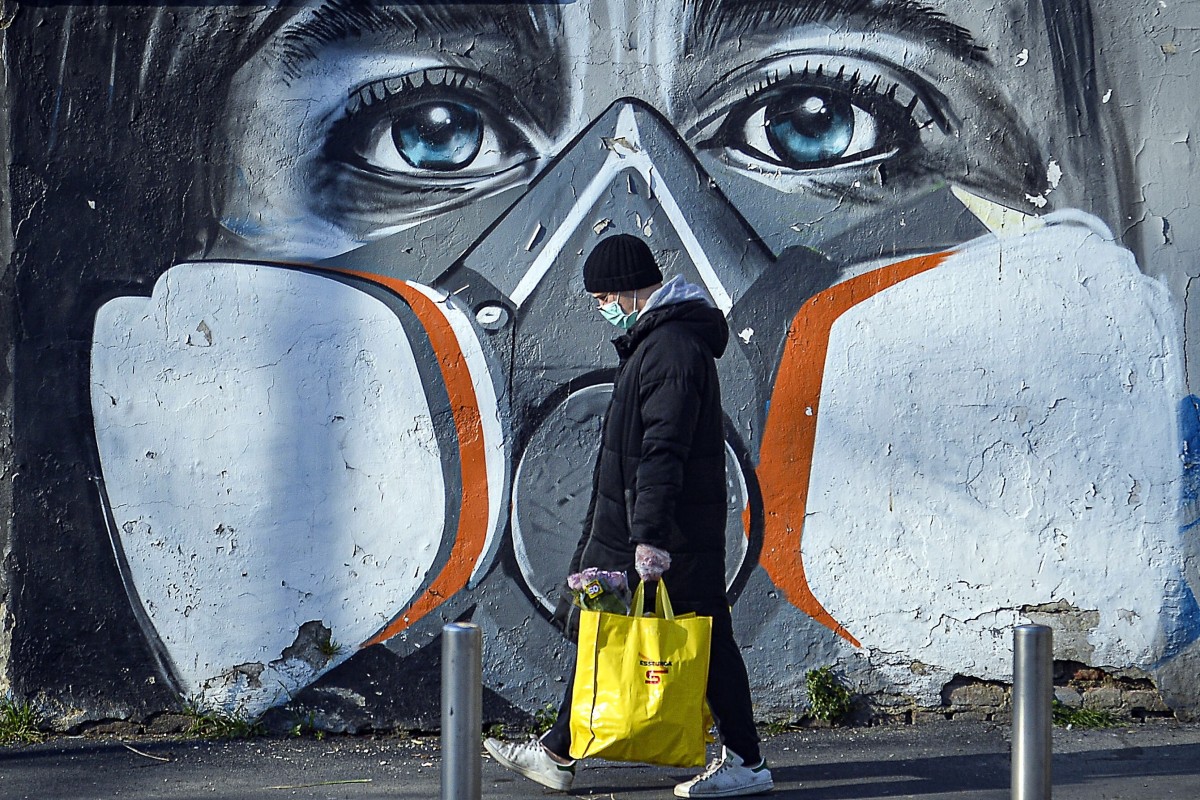
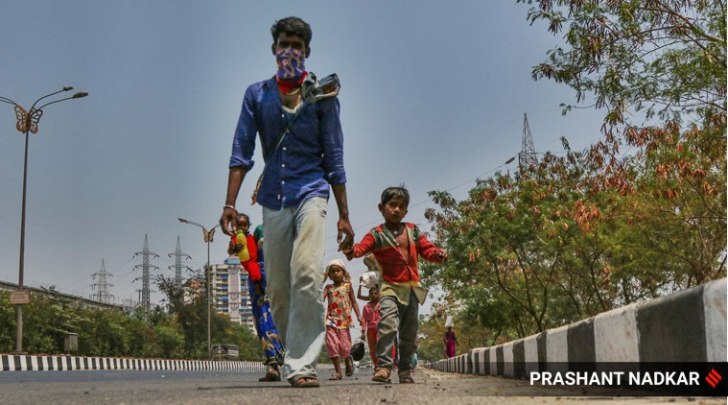
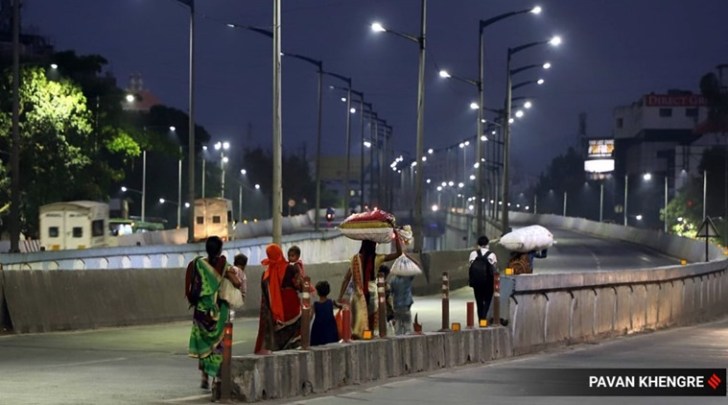
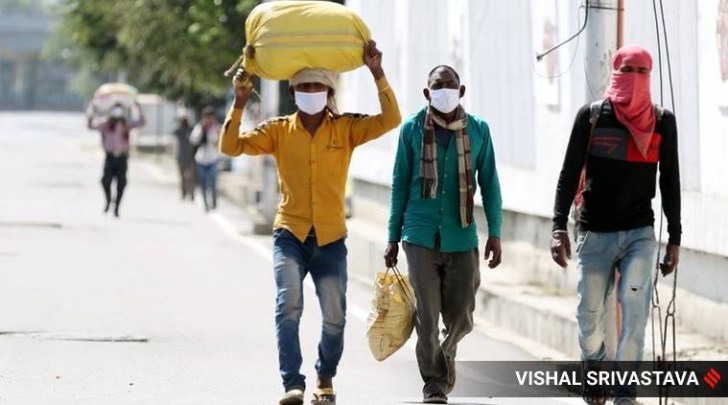


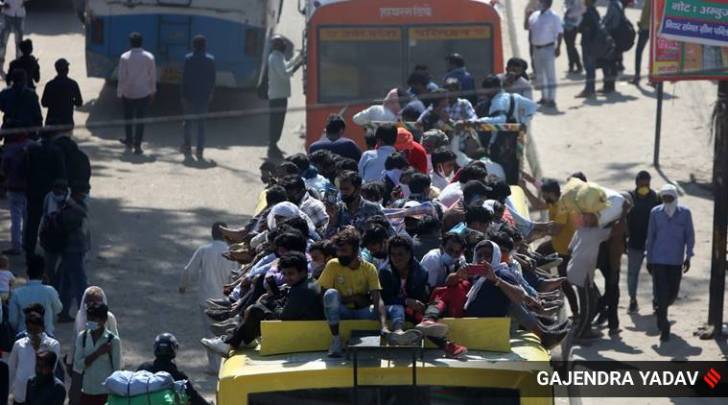
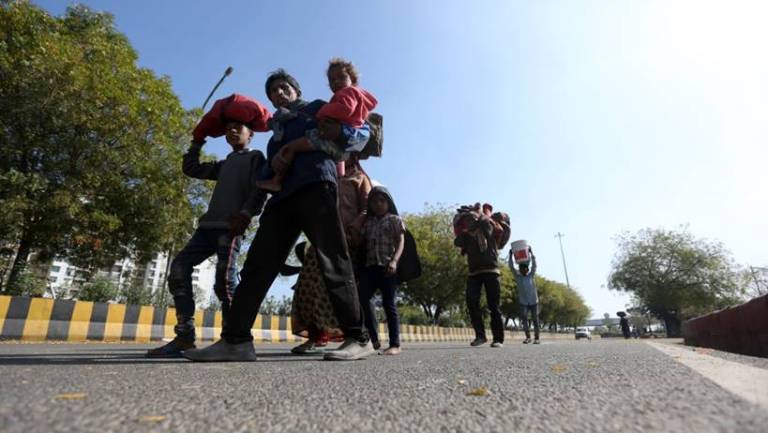
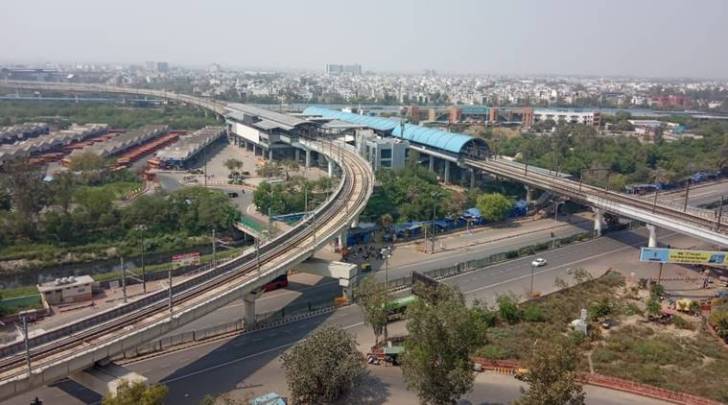
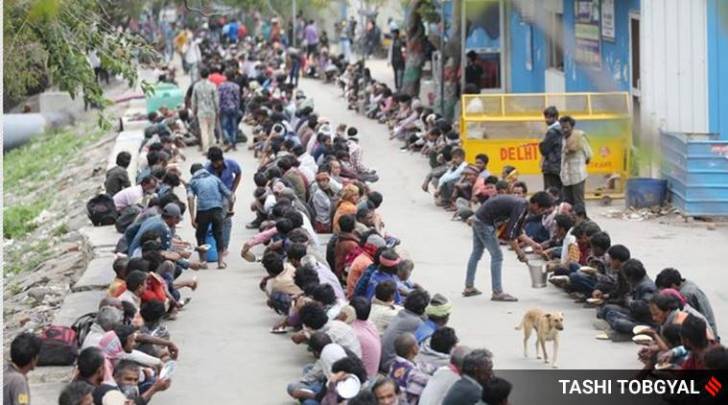


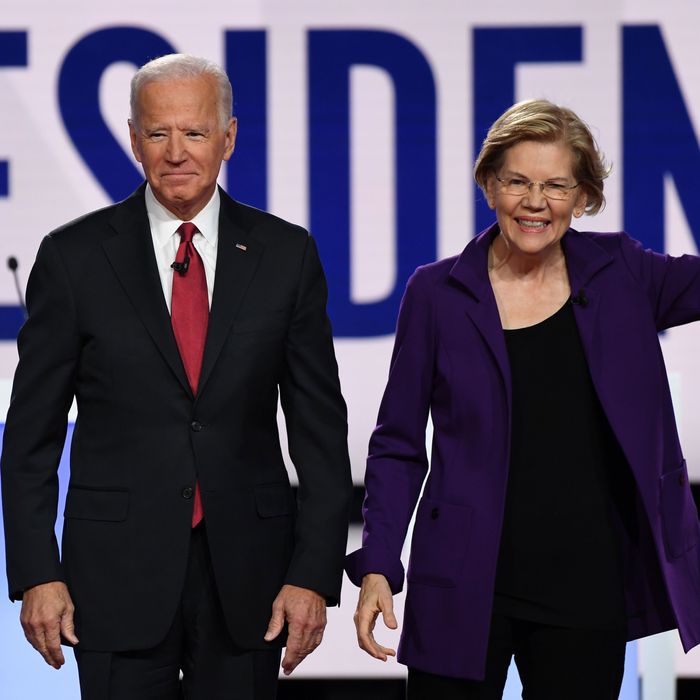
/cdn.vox-cdn.com/uploads/chorus_image/image/66655421/1199556559.jpg.0.jpg)

